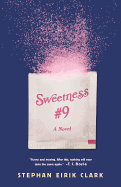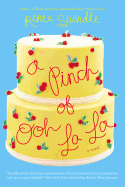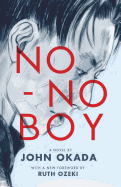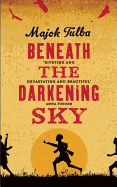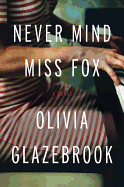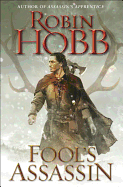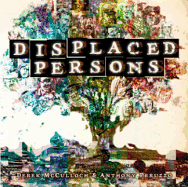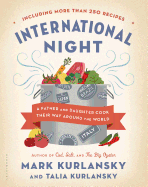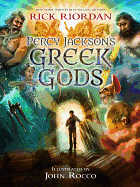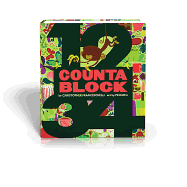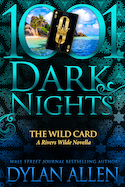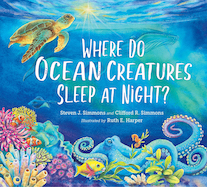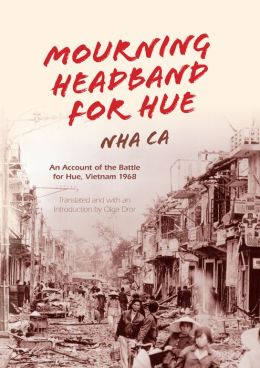
Nha Ca--which means "gentle, elegant song" or "canticle" in Vietnamese--is the pen name of Tran Thi Thu Van, one of South Vietnam's most prominent authors. Born in Hue in 1939, she left her native city to marry a poet, Trần Dạ Từ, and establish her literary career in Saigon. Mourning Headband for Hue: An Account of the Battle for Hue, Vietnam 1968 (originally published in 1969 and just released in a new edition from Indiana University Press) recounts the horrific sufferings of Hue civilians during the 1968 Tet Offensive, when the North Vietnamese Army and Viet Cong attacked and held much of the city. At the time Nha Ca was in Hue to attend father's funeral; she was stranded there. To this day, her harrowing account--of war casualties, searches and arrests, ideological purges--generates intense debates about accountability during war time. In 1970, Nha Ca donated the book's proceeds to the city of Hue for its reconstruction.
After the fall of Saigon, Nha Ca and her husband were incarcerated by the Communist government for being "cultural saboteurs" and Mourning Headband for Hue was prominently displayed in the Museum of American War Crimes as evidence of her misconduct. In 1989, the couple and their children were granted political asylum by the Swedish government and later immigrated to the U.S.; they now live in Southern California, where they founded the daily newspaper Việt Báo.
Translator Olga Dror studied Vietnamese language and culture at Leningrad State University. She received a Ph.D. in Southeast Asian History from Cornell University in 2003 and is now an associate professor of history at Texas A&M University.
Did you two ever discuss the impact of Mourning Headband or why it should be translated into English?
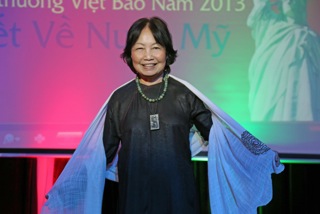 |
| Nha Ca at the annual Viet Bao Writing Competition. photo: Viet Bao |
Nha Ca: I have never felt the need to ask Olga why she wanted to translate my book. Her experience and credentials speak for themselves. Olga understands Vietnam, as metaphor and reality, from many different angles.
Olga Dror: Mourning Headband was written in 1969, with the author still in shock from events in Hue during the early months of 1968. The mourning headband is a piece of white cloth tied around a person's head to observe the death of a family member. Nha Ca's account captured the plight of Hue residents as they were caught in the crossfire between the attacking Communist forces and the South Vietnamese and American forces on the other side.
You feel Nha Ca's anguish for her native city and people. Her occasional unpolished prose, which I try to preserve in translation, reflects the raw presence of the moment. As such, Nha Ca's work is different from memoirs penned by other South Vietnamese writers that have appeared in the United States in the aftermath of the war. While extremely important in remedying our perception of the war strictly as a U.S.-Vietnamese Communist conflict, these memoirs are inevitably colored by events, experience and knowledge formed after the war. The immediacy of Nha Ca's work makes it unique for American readers.
 |
| Translator Olga Dror |
Nha Ca: In America, the Vietnam War is still taught in high schools and universities from a predominantly leftist liberal viewpoint. Over the years, literature sympathetic to the North Vietnamese perspective continues to be translated and published. Meanwhile, Southern Vietnamese views about the war are paid scant attention. It has taken less effort for Jane Fonda to apologize for her photograph on the North Vietnamese army's anti-aircraft gun than for intellectuals to redefine how the Vietnam War should be taught in American schools. Although I have seen a shift in perception, changing this biased approach takes time.
My faith in Olga's work is based on her role as an objective scholar of Vietnamese history and culture. I'm truly impressed by the thorough and comprehensive translator's introduction that she includes in the book, which analyzes a wide range of perspectives on the war, not only those held by Northern and Southern Vietnamese, but also by liberal and conservative Americans, the Soviet Union and post-Soviet Union historians.
How did you collaborate on the translation? How long did it take?
Nha Ca: I officially signed our translation agreement in September 2012. From that time until this August is about two years. All of our communication has been via e-mail, almost exclusively in Vietnamese. We have not met or spoken on the phone but have become good friends. I can't recall any significant issues in translation. Aside from supplying context to things I personally experienced, I respected Olga's process and did not interfere.
Olga Dror: I have not met Nha Ca in person. I knew about her work and wrote to her to ask whether I could translate Mourning Headband. I started, I think, in late 2011 or early 2012. Since I am not a full-time translator and also have a full-time job teaching at Texas A&M University, I just worked on it as much as I could. Nha Ca did not intervene in the process at all. Whenever I had questions about the text, chronological sequence, names, etc., we would discuss them by e-mail. She was very gracious in explaining local expressions and idioms. Except for minor adjustments made with her permission, I envisioned myself merely as a conduit for the author's voice and, through her, the voices of the people of Hue at the time of the Tet Offensive.
In the "Small Preface: Writing to Take Responsibility," Nha Ca wrote, "Our generation, the generation that likes to use the most beautiful and showy words: not only must we tie a mourning headband for Hue and for our homeland, which are being destroyed, but we must also take responsibility for Hue and for our homeland." Did you ever discuss this passage with each other, how "we" and "our generation" were or are defined? Why must "we" or "our generation"--and not only the Communists--take responsibility for what happened in Hue?
Nha Ca: I have talked about Hue and the Vietnam War, the differences between the Free South and the Communist North, in many books that bear my name. But in Mourning Headband for Hue, my "Small Preface" is simply an invitation to "light candles [and] burn incense" at the symbolic ancestors' altar. In Vietnamese culture, each child from a family must gather in front of the ancestors' altar at the death anniversary of a family member. Similarly, the idea of an ancestors' altar for all Vietnamese at each anniversary of the Hue Massacre provides an opportunity for remembrance, prayer, and forgiveness. Such an altar would not be a proper place for denunciation or retribution.
The idea of a spiritual space, where all enmity ceases, is not unique to Vietnamese culture. Two years before the end of the U.S. Civil War, on March 30, 1863, President Lincoln issued Proclamation 97 to set aside a "Day of National Humiliation, Fasting, and Prayer," stating, "It behooves us, then, to humble ourselves before the offended Power, to confess our national sins, and to pray for clemency and forgiveness." When the war ended in April 1865, there was no victory parade. The nation healed slowly. It became stronger for acknowledging this collective guilt.
Olga Dror: I did not talk to Nha Ca about her "Small Preface." This was her position, at least back in 1968. And I respect it. In her works, we see a huge leap from an apolitical person before 1968 to a person whose political position was shaped by the realities of war. My goal was to retrieve her voice, a South Vietnamese civilian's, from oblivion, and to show another view of events in Hue during the Tet Offensive. In American discourse we primarily talk about the war from two dominant views: American and Vietnamese Communist. We tend to forget that in South Vietnam, many people were neither Communist sympathizers nor American puppets. Nha Ca's work makes us see how each person's perception, while unique, contributes to a larger, more complicated context about the war, a little like Akira Kurosawa's approach in Rashomon.
Nha Ca: The Vietnam War narrative, with brothers in the same family killing each other and destroying their homeland, began over 60 years ago and ended in 1975. But even today, in Hue, in all of Vietnam, elsewhere in the world, inside many people's minds, there is no joint remembrance, no communal ancestors' altar, no resolution.
Nearly half a century ago, when I wrote my preface for the first edition of Mourning Headband for Hue, I believed in a renewed future for Hue, for Vietnam. Today, with the same faith, I find myself still waiting for a day of reckoning in my homeland, where once, we used to know the meaning of love and human decency, just as we used to know the meaning of culture and history. --Thuy Dinh, editor, Da Mau magazine
Nha Ca, with Olga Dror: Revisiting the Tet Offensive










